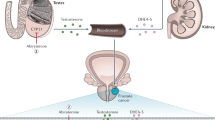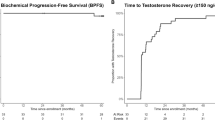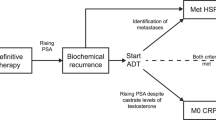Abstract
With an increasing interest in the early introduction of hormonal therapy in patients who cannot be cured of their prostate cancer by radical surgery or radiotherapy, there is a need to consider the most patient-friendly, effective hormonal therapy at each stage of the disease, thereby hoping not only to improve the quantity of the patient's life but also to maintain a reasonable quality of life. With the development of new hormonal therapies such as non-steroidal androgens, LHRH-antagonists and differentiation agents, urologists need to look again at the hormonal status of their patients before prescribing an appropriate therapy. There is increasing evidence that at certain stages of the disease patients are prepared to trade off the length of life for improved quality and bearing this in mind there needs to be some substantial re-thinking over the most appropriate therapy, particularly at early stages of the patient's disease and following progression to the later stages.
This is a preview of subscription content, access via your institution
Access options
Subscribe to this journal
Receive 4 print issues and online access
$259.00 per year
only $64.75 per issue
Buy this article
- Purchase on Springer Link
- Instant access to full article PDF
Prices may be subject to local taxes which are calculated during checkout
Similar content being viewed by others
Author information
Authors and Affiliations
Rights and permissions
About this article
Cite this article
Newling, D. Tailoring of hormonal therapy in prostate cancer. Prostate Cancer Prostatic Dis 3, 21–27 (2000). https://doi.org/10.1038/sj.pcan.4500400
Received:
Revised:
Accepted:
Published:
Issue Date:
DOI: https://doi.org/10.1038/sj.pcan.4500400
Keywords
This article is cited by
-
Androgen deprivation and cognition in prostate cancer
British Journal of Cancer (2003)



